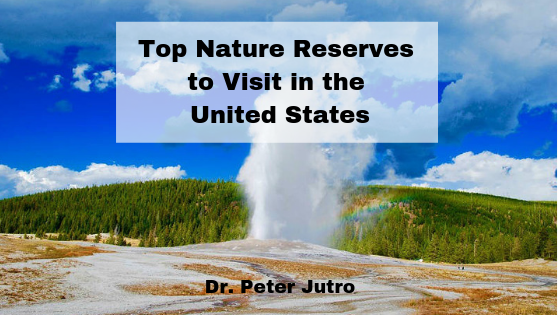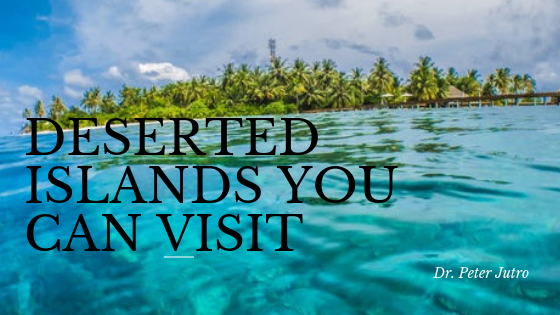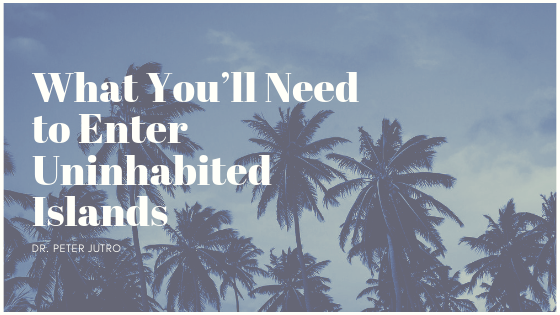
Top Nature Reserves to Visit in the United States
Most people are unaware of the fact that a nature reserve or preserve can also be a national park. By definition, a nature reserve is land that is protected because it is home to particular fauna and/or flora. This land can be public or private, and national parks are of course public land. National parks remind us to take time to enjoy the beauty and wildlife around us. Each park has a unique ecosystem that may have evolved over thousands of years or more. These lands were protected in order to save them from development and other environmental hazards. Let’s take a look at some of the most interesting reserves to visit in the U.S.
1) Yellowstone National Park — This 2.2 million-acre expanse, the country’s first national park, has a history dating back thousands of years. The first humans to use the land were the Native Americans. In the 1800s, when Europeans explored western North America, they came across the Yellowstone area. The first organized expedition was in 1870, and it led to Yellowstone being established as a national park by President U.S. Grant in 1872. The park was managed by the U.S. Army from 1886 to 1918, when the National Park Service, created two years earlier under President Woodrow Wilson, assumed responsibility. The park is home to many well-known natural landmarks including Old Faithful, Yellowstone Canyon, and Mammoth Hot Springs as well as historic structures, such as the Lake Fish Hatchery. A more worrisome fact is that the park is located above a “supervolcano,” which is regularly monitored by scientists for signs of a possible eruption.
2) Pacific Remote Islands Marine National Monument — Made up of islands, reefs and atolls in the Pacific Ocean near the equator, it is, at almost half a million square miles, one of the world’s largest marine conservation areas. It is home to millions of birds and marine life, including the coconut crab, giant clams, Masked Boobies and White Terns. The monument was established in 2009 by President George W. Bush under the authority of the Antiquities Act of 1906, and was expanded in 2014 by President Barack Obama. Except for the Wake and Johnston Atolls, which are managed by the Department of Defense, the monument is managed by NOAA and the U.S. Fish and Wildlife Service.
3) Yosemite National Park –– An impressive park whose form was defined granite and glaciers, Yosemite was first established by President Lincoln in 1864 as a Public Trust of California, years before Yellowstone, the first “National Park.” Nearly 750,000 acres protect wildlife, waterfalls, meadows, giant sequoias, and more. Like Yellowstone, the history of the land goes back thousands of years with Native Americans as the first inhabitants. Prospectors descended on the park in the Gold Rush of 1849, and the California State Militia’s Mariposa Battalion drove out the Native American inhabitants to open it for prospecting and settlement. Through the urging of naturalist John Muir, Congress established Yosemite National Park in 1890, and additional areas were added to the park in 1906. Also, in 1918, it became the first park to have a female park ranger, Clare Marie Hodges.

Deserted Islands You can Visit
Most of us have visited an island, perhaps Maui, Nantucket or even Long Island. Each has its own unique characteristics that make them fun to visit. They are heavily populated with a variety of structures. With all the activity, you wonder what it would have been like to be the first to explore one of them. To see them in their natural state. What if you could visit an uninhabited island today? Where you could disconnect from your devices and really let your imagination run wild? You could have fun exploring the island at your pace, and not worry about a tour guide. It can be a romantic getaway or a fun family vacation where everyone could be pirates for a day. Think they don’t exist? Think again. There are a number of islands around the world that offer access to tourists. Below are just a few to explore.
Owen Island, Cayman Islands — You’ll have to work to get to it, since it’s only reachable by kayak or rowboat from Little Cayman Island. It’s perfect for a day trip during your stay at Little Cayman. You can have a picnic while relaxing on your “private” beach or explore the fauna and flora.
Cocos Island, Costa Rica — Located off the coast of Costa Rica, Cocos Island is a scuba diver’s dream. Thought to once have been a hideout for pirates with buried treasure, this island is part of the National Park of Costa Rica and listed as a World Heritage Site by UNESCO. Those who visit enjoy the pelagic ocean life consisting of 30 types of coral, 60 types of crustaceans, 600 types of mollusks and over 300 types of fish. Jacques Cousteau visited the island in 1994, calling it the“most beautiful island in the world.” If you love nature, you won’t be disappointed. The island offers tropical wet forests that provide habitat for unique flora and fauna, including 74 species of ferns and 90 types of birds. Whether you want to explore the water or land, you’ll find something special.
Isle Royale, Michigan — It’s hard to imagine a deserted island in Michigan, but there is. It’s in Lake Superior as part of the U.S. National Park system. The Isle Royale National Park was established in 1931. The isle was used for commercial fishing and mining, and many of the fisheries were already built before the U.S. National Park Service took over the isle. The federal government was able to buy the properties at a low price by granting the fisherman life leases. When you visit, you can explore the mining sites, digging sites, and the old railroad. There are trails all over the isle, which were built to connect the mining locations. The island is closed to the public from November 1st through April 15th.

What You’ll Need to Enter Uninhabited Islands
Going on vacation to an island can be very exciting; it’s even more exciting when you are going to explore one that’s uninhabited. This type of island has few or no man-made structures, and is often part of a national park. Trips to them are considered a side activity while on a vacation on a neighboring island, for example, vacationing on Grand Cayman and visiting Owen Island in the Cayman Islands. You would still need to go through customs and immigration to get to the main island (or country). You must also have valid travel documents and any required vaccinations. To travel to a deserted island, you should:
Secure transportation — You will need to secure transportation to these islands via a small plane or boat. It can be arranged by the hotel you are staying or by the travel agency used to book the trip. Be aware that rates for seaplanes vary and the schedules can be unpredictable.
Bring Food — Many have lunch while relaxing on the beach. While some islands do not permit certain foods to be brought to the main island, the uninhabited ones have even more strict restrictions because they are home to various species or are used for farming (e.g. the Maldives). The food that is allowed would be from your hotel. That said, there are also strict cleanup regulations to keep the island pristine.
Check the Local Laws — Depending on the government that owns the uninhabited island, you will need to abide by the local laws, such as wearing the proper clothing (e.g. no bikinis in the Maldives), what areas are restricted (e.g. climbing Ball’s Pyramid) and what plants you can touch. The flora and fauna of these uninhabited islands are very delicate and are not to be trampled on or removed, so as not to disturb the habitat. Many of the popular islands do not permit travelers to bring live plants or plant cuttings for this very reason.
Visiting these islands is a wonderful opportunity to experience nature in its purest form. What you often don’t need anymore is a restricted area permit (RAP). RAPs were once required to visit 11 islands in the Andamans, an archipelago in the Bay of Bengal. The removal of the permit requirement by the Indian government was intended to boost tourism, and the threat to the Andaman habitats was deemed minimal.
About Peter Jutro
Peter Jutro has a passion for travel and exploration, as well as cartography and the history of maps. Having traveled extensively over the past 50 years, Peter has had the opportunity to learn a great deal about people and the world as a whole. He is a firm believer in his wife Ellen’s adage that “the more you travel, the bigger the world gets.”
Whether traveling for business or pleasure, Peter Jutro is always excited about the opportunities that a new place and culture have to offer. Some of his fondest memories include his honeymoon in Switzerland, a country that has felt like a second home to his family, as well as a research trip to Central Siberia where he had the exciting opportunity to work with the Russians on environmental issues.
An intently curious individual, Peter Jutro is continually looking to explore what exists around the world. While he may be learning about a culture’s history, studying its environmental concerns, or he and his wife might be hiking and scuba diving in one of a number of countries for pleasure, Peter always appreciates how travel serves as a catalyst for education, personal growth, and developing friendships.
Biodiversity In The Florida Keys
Peter Jutro is currently in the process of writing a book about Lignumvitae Key, an island in the Florida Keys. He has been involved in research and in the preservation of this area since the early 1970’s. Dr. Jutro finds it an incredibly fascinating place for historical, political, and biological reasons. The Lignumvitae Key Aquatic Preserve encompasses 7,000 acres of seagrass meadows, deep water channels, hard bottom communities, and mangrove wetlands. The island itself includes the last pristine lowland tropical forest remaining in the United States.
Berlin: A Family Connection
Of German-Jewish descent, Peter Jutro has an extremely personal connection to Berlin, the city from which his family emigrated to the United States. Just prior to World War II, his late father spent several months as a concentration camp prisoner in a Berlin suburb. Recently, Peter was excited to find a journal among his family’s historical documents; This journal had been written in by his father in 1939, and detailed life in the concentration camp. This inside look at the concentration camp, as well as the close personal connection with the author, makes this find a unique historical document. Peter is currently in the process of transcribing and translating the manuscript into English so that his father’s experiences can be broadly shared.
Professional Background
Peter Jutro dedicated more than 35 years to Federal service, serving in a variety of positions involved with Environmental Policy and National Security. Most recently, Dr. Jutro was Acting Associate EPA Administrator for Homeland Security. Before that, he was Deputy Director for Science and Policy and Director of the Washington office of EPA’s National Homeland Security Research Center. This group is responsible for the research needed to provide the science and technology behind the EPA’s disaster mandates, which fall primarily in the areas of decontamination, water protection, risk assessment, and resilience. His earlier work in academia, on Congressional Staff, and with Federal Agencies, dealt largely with risk assessment, global climate change and biological diversity.
